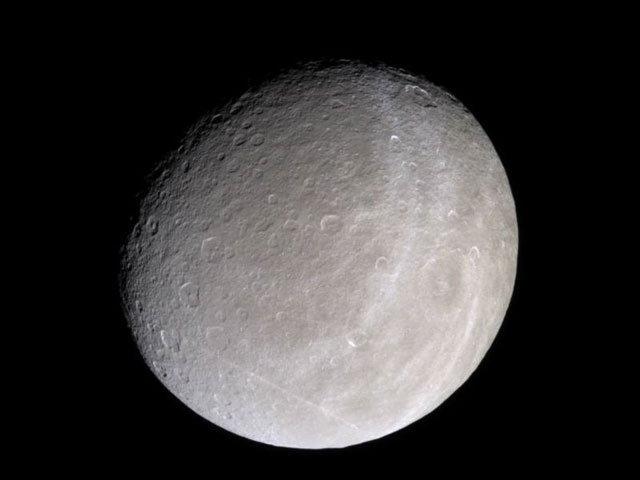
|
Explanation: Each moon of Saturn seems to come with its own mystery. Rhea, Saturn's second largest moon behind Titan, shows unusual wisps, visible above as light colored streaks. Higher resolution images of the wisps show them to be made of long braided fractures. Rhea is composed mostly of water ice, but likely has a small rocky core. Rhea's rotation and orbit are locked together, just like Earth's Moon, so that one side always faces Saturn. A consequence of this is that one side always leads the other. Rhea's leading surface is much more heavily cratered than the trailing surface, pictured above. The above image in natural color was taken last month by the Cassini robot spacecraft in orbit around Saturn.
|
January February March April May June July August September October November December |
| ||||||||||||||||||||||||||||||||||||||||||||||||
NASA Web Site Statements, Warnings, and Disclaimers
NASA Official: Jay Norris. Specific rights apply.
A service of: LHEA at NASA / GSFC
& Michigan Tech. U.
Based on Astronomy Picture
Of the Day
Publications with keywords: Rhea - Saturn - cassini spacecraft
Publications with words: Rhea - Saturn - cassini spacecraft
See also:
- APOD: 2025 November 16 Á Crossing Saturns Ring Plane
- APOD: 2025 September 25 Á Saturn Opposite the Sun
- APOD: 2025 September 22 Á Equinox at Saturn
- APOD: 2025 February 23 Á Saturn in Infrared from Cassini
- APOD: 2025 January 19 Á Titan Touchdown: Huygens Descent Movie
- APOD: 2024 December 8 Á Aurora around Saturns North Pole
- Saturn at Night
